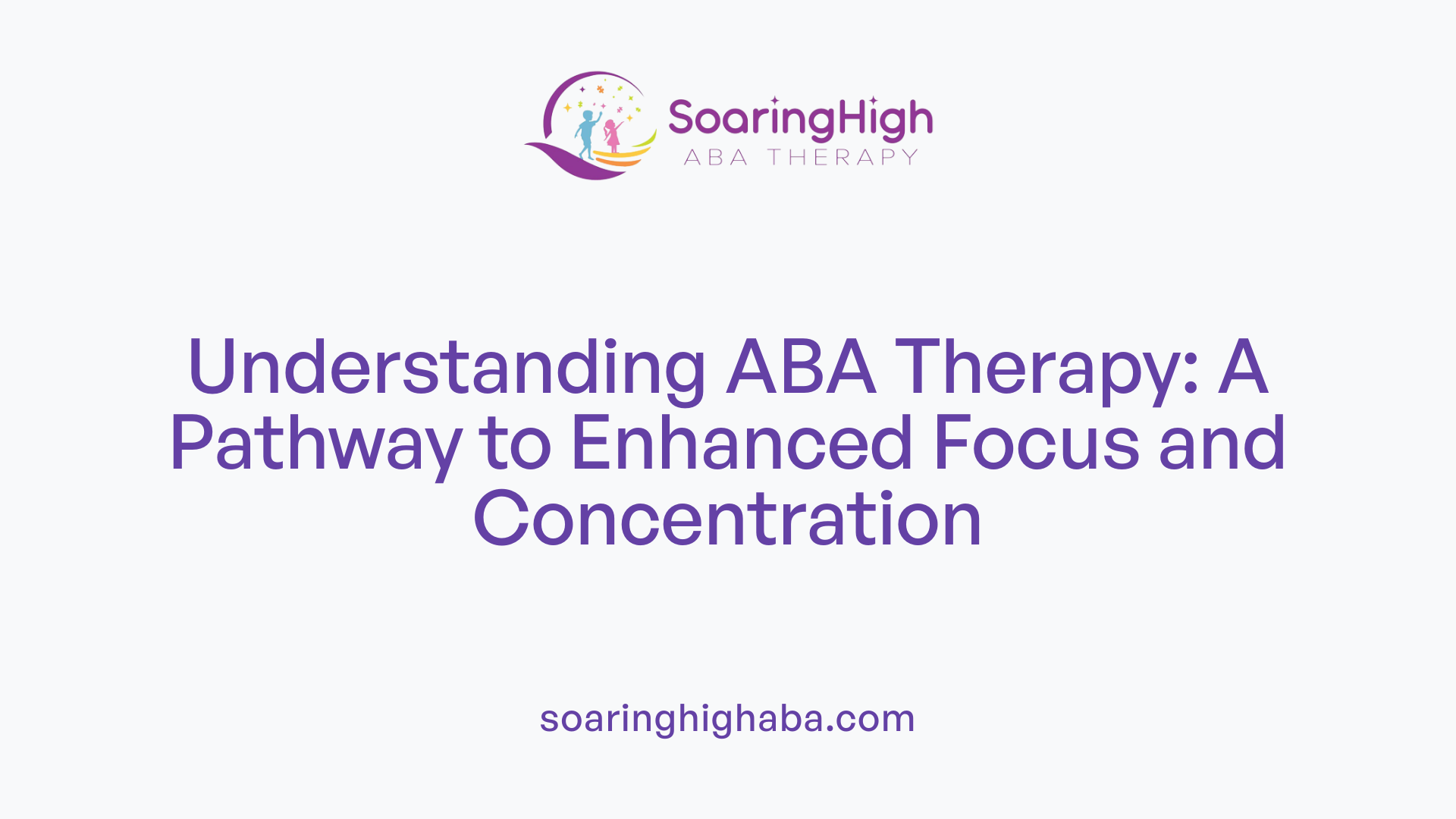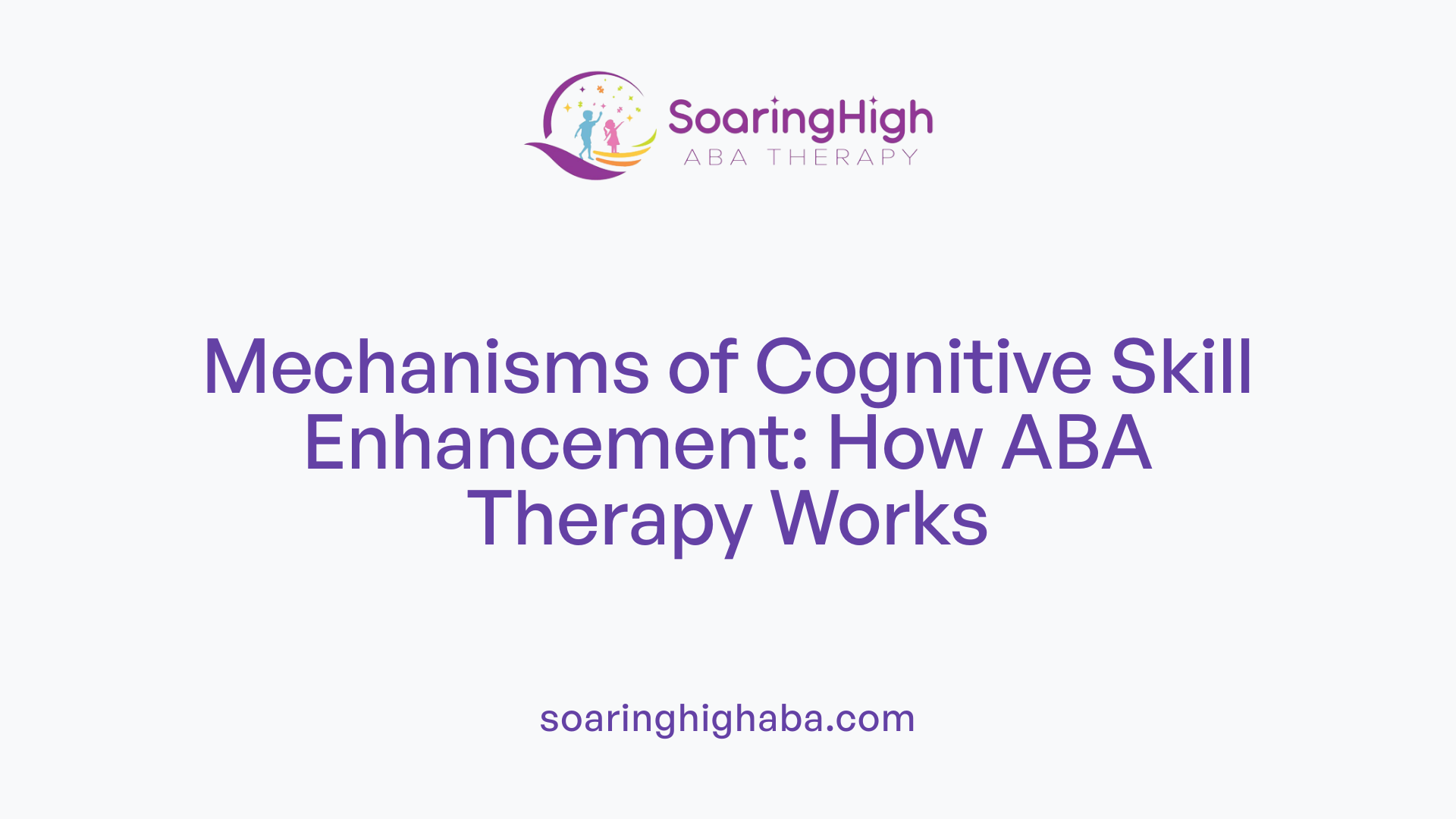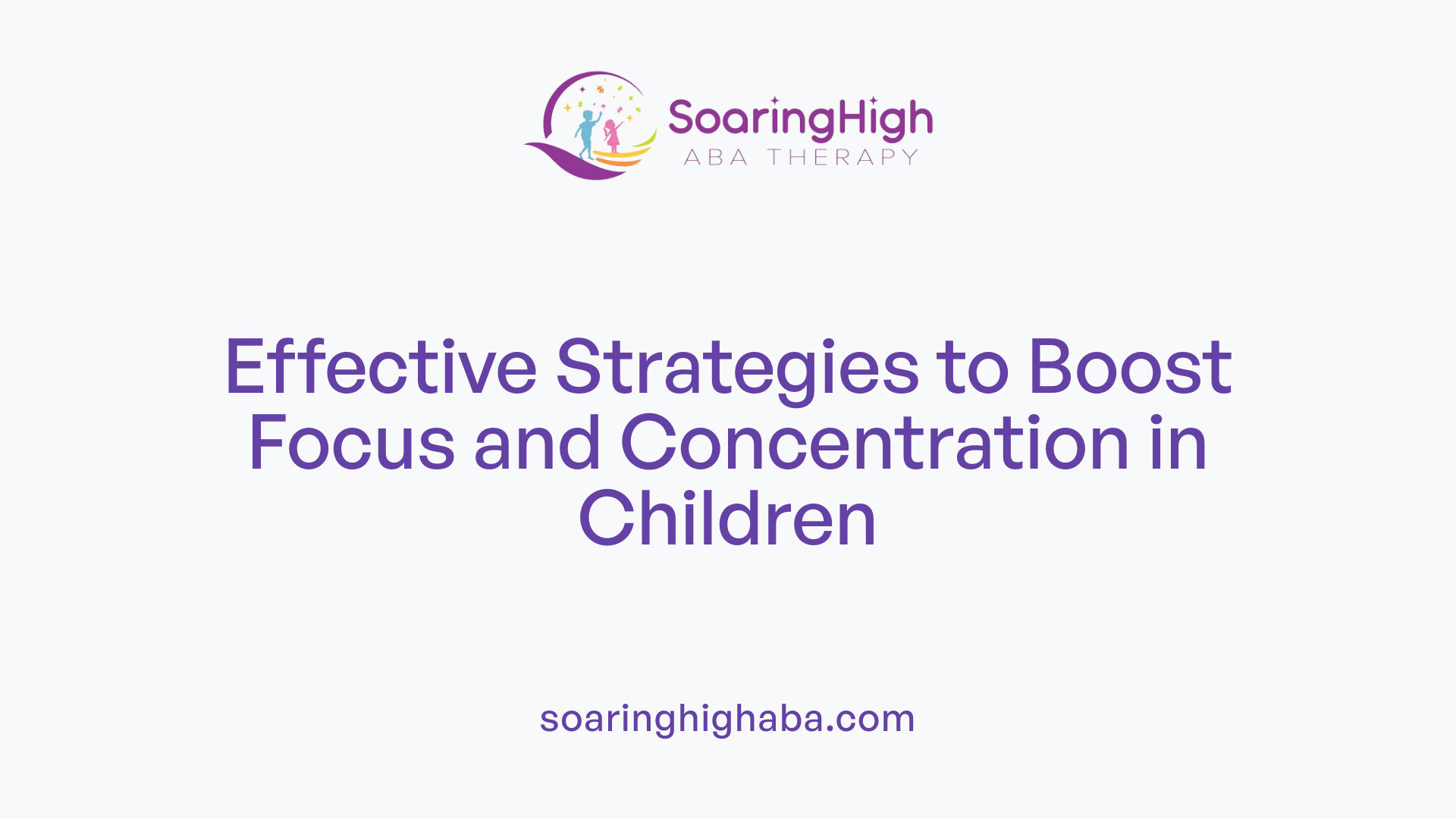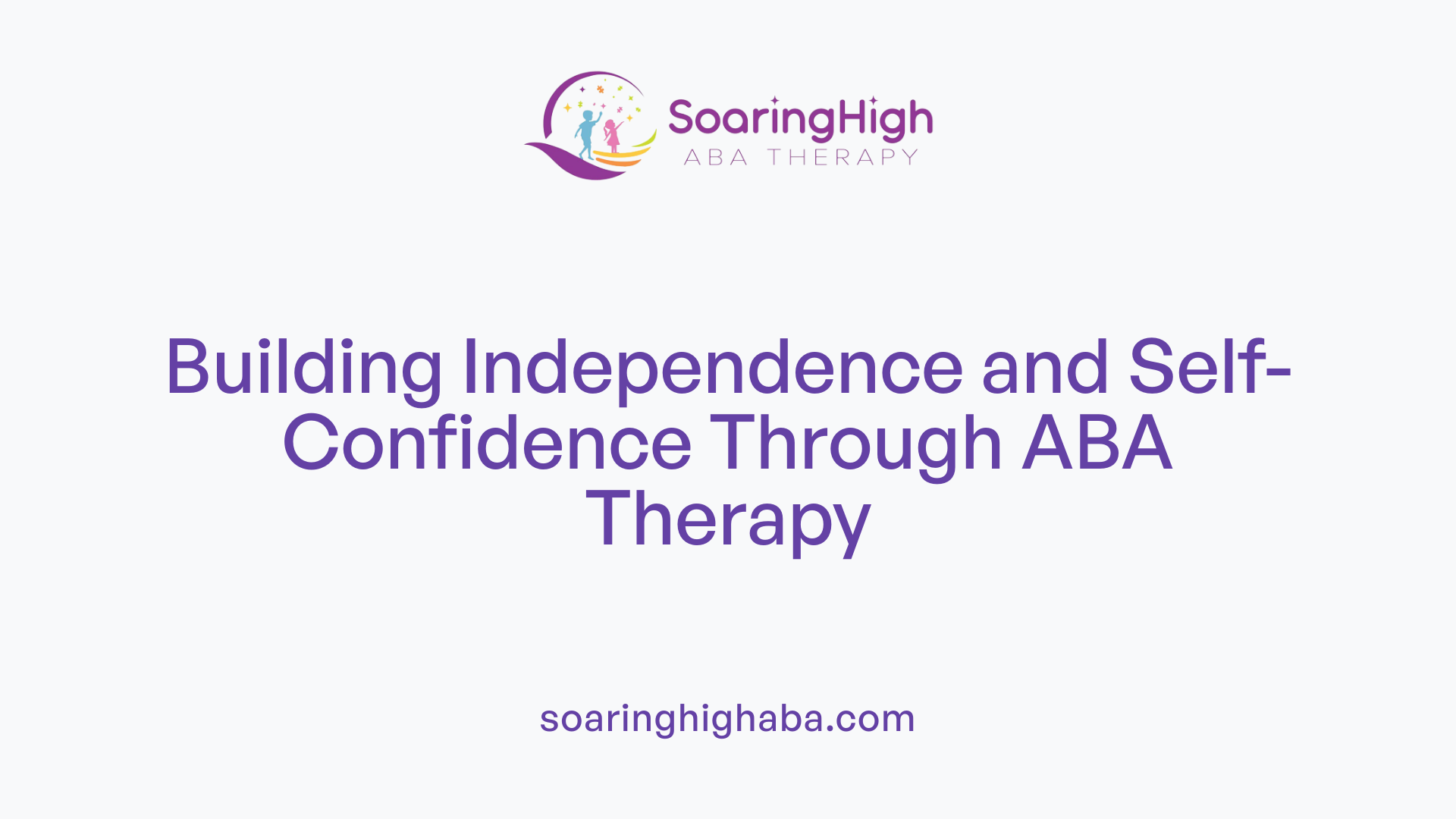Introduction
Applied Behavior Analysis (ABA) therapy has emerged as a pivotal intervention for helping children, specifically those with autism spectrum disorder (ASD) and ADHD, enhance their focus and concentration. By employing structured strategies and tailored activities, ABA therapy is designed to meet the unique needs of each child, aiming to improve their cognitive skills and overall capacity for attention. This article delves into the mechanisms, benefits, and effectiveness of ABA therapy in overcoming focus-related challenges in children.
Understanding ABA Therapy

What is ABA therapy and how does it aim to enhance focus and concentration in children?
ABA therapy, or Applied Behavior Analysis, is a highly tailored intervention designed to improve behaviors and skills in children, with a particular focus on those diagnosed with ADHD and autism. This therapy works by systematically breaking tasks into smaller, more manageable steps. This approach not only enhances understanding but also fosters an increase in attention span through gradual exposure to longer task durations.
Positive reinforcement plays a crucial role in ABA therapy. When a child demonstrates focused behavior, such as completing a task without getting distracted, they can be rewarded with tokens or praise, motivating them to maintain that level of engagement in the future. This builds not only their focus but also their confidence in their abilities to complete various tasks, including social interactions.
ABA therapy also addresses impulse control by teaching children self-regulation strategies. For instance, the therapy might introduce calming techniques or structured routines that help children manage their emotions and reactions, which are often challenging for those with ADHD. Additionally, communication skills are improved through detailed instructions and practice in expressing needs effectively, further enhancing engagement during interactions.
Moreover, ABA therapy employs methods like functional behavior assessments to gain insight into children's motivations, allowing for personalized interventions that cater to individual needs. By focusing on both social and academic skills, this therapy can lead to significant improvements in children's attention capacity in various settings.
Overall, when integrated into a broader treatment plan, ABA therapy proves to be an effective method for supporting children as they navigate focus-related challenges.
Mechanisms of Cognitive Skill Enhancement

How does ABA therapy work to improve cognitive skills such as attention span in children?
ABA therapy improves cognitive skills in children, especially their attention span, through a variety of structured behavioral interventions tailored to each individual’s needs. Positive reinforcement is a cornerstone of these methods, rewarding focused behaviors which strengthens overall engagement.
Moreover, task analysis plays a vital role; tasks are broken into manageable parts, making it easier for children to concentrate without feeling overwhelmed. Daily activities transform into learning opportunities through structured and engaging methods that aid information retention and recall. For example, sorting objects and matching games can deepen focus while building cognitive flexibility.
Through applied behavior analysis, therapists create engaging environments and employ strategies such as sensory activities. These not only hold a child's attention but also immerse them in multi-sensory experiences that enhance focus. By reinforcing positive behaviors, ABA nurtures an educational atmosphere where children can thrive. This is especially beneficial for children with autism, whose cognitive differences can make extended concentration challenging.
Research suggests that early and intensive interventions can lead to significant cognitive improvements. Well-designed school readiness programs incorporate ABA, utilizing routines and structured learning to build attention spans and reduce anxiety. Overall, ABA fosters an environment conducive to developing essential skills that enhance attention and independence, ultimately contributing to better educational outcomes.
Key Benefits of Structured Activities in ABA
- Engagement: Engaging children through play-based techniques keeps them motivated.
- Independence: Children learn self-care and daily life tasks, which enhances their confidence.
- Task Analysis: Breaking larger tasks into smaller parts aids in managing their expectations and efforts while working, increasing overall focus.
Through these multimodal approaches, ABA therapy effectively enhances attention spans and cognitive skills, setting a strong foundation for lifelong learning and development.
Strategies to Boost Focus and Concentration

What are the most effective ABA strategies for improving focus and concentration in children?
Effective ABA strategies for enhancing focus and concentration in children, especially those with autism, revolve around structured environments and tailored interventions. Positive reinforcement shines as a primary approach. It encourages desired behaviors, rewarding children when they maintain attention, helping them understand their achievements can lead to success.
In addition to reinforcement techniques, creating structured routines is vital. Programs like school readiness incorporate consistency, reducing anxiety and allowing children to concentrate better. With predictable schedules, they can develop enduring attention spans.
Breaking tasks into smaller steps enables children to handle tasks without feeling overwhelmed. For example:
| Activity | Purpose | Outcome |
|---|---|---|
| Sorting objects | Enhances categorization skills | Improves focus on task completion |
| Building blocks | Fosters creativity and teamwork | Strengthens focus in engaging activities |
| Matching games | Reinforces memory skills | Boosts concentration through competitive play |
| Listening activities | Encourages attention and recall | Develops focus during interactive storytelling sessions |
Engaging children through activities linked to their interests also significantly enhances their ability to concentrate. Tailoring ABA therapy to address individual challenges ensures effectiveness, leading to improved focus and behavioral outcomes overall.
Addressing Focus and Concentration Challenges
How effective is ABA therapy in addressing focus and concentration challenges in children?
ABA therapy is considered highly effective in addressing focus and concentration challenges in children, particularly for those with autism spectrum disorders and ADHD. This evidence-based therapy, endorsed by leading health organizations, emphasizes observable behaviors and uses personalized interventions to improve attention spans and focus.
Key Components of ABA Therapy Include:
- Structured Activities: Tailored tasks to engage children's interests and build their concentration gradually.
- Positive Reinforcement: Rewards for focused behavior strengthen engagement in tasks, from academics to social interactions.
- Task Breakdown: Dividing larger tasks into manageable steps facilitates comprehension and reduces overwhelm.
Research shows significant improvements in cognitive functioning and social skills when ABA therapy is introduced before the age of five. Therapists create personalized treatment plans focusing on each child's unique challenges, such as sensory sensitivities or hyperfocus on preferred topics, fostering overall engagement.
When combined with medication for ADHD, ABA therapy enhances outcomes, enabling lower medication doses while improving self-regulation skills. This dual approach can significantly bolster focus and concentration in educational and social contexts.
The Role of Memory and Problem Solving
Enhancing Memory Through ABA
ABA therapy significantly enhances memory skills by breaking tasks into smaller, manageable steps. This method, paired with consistent repetition, aids in information retention and recall. Children learn better when they practice in bite-sized portions, making complex concepts easier to grasp and remember.
Problem-Solving Skills
ABA therapy encourages children to engage in structured, goal-oriented tasks. This approach allows them to explore different solutions to challenges, enhancing their problem-solving abilities. By practicing these skills the children not only learn to tackle obstacles but also improve their ability to focus on tasks as they learn to navigate various challenges.
Impact on Focus
The correlation between enhanced memory and problem-solving skills directly influences a child's capacity to concentrate. As children develop strong memory techniques and problem-solving strategies through ABA therapy, their ability to maintain attention during tasks improves. They become more adept at managing distractions, allowing them to focus more effectively on both academic and social interactions.
| Aspect | ABA Therapy Strategies | Effects on Children |
|---|---|---|
| Memory Enhancement | Breaking tasks into small steps | Better retention and recall of information |
| Problem-Solving | Engaging in structured tasks | Improved ability to navigate challenges |
| Focus Improvement | Applying learned skills | Enhanced focus on academic and social interactions |
Fostering Communication and Social Interaction
Improvement of Communication Skills
ABA therapy employs structured techniques to enhance children's communication abilities. By breaking language down into manageable components, therapists help children articulate their thoughts and feelings. This approach not only facilitates clearer self-expression but also promotes greater engagement during social interactions, which in turn heightens focus.
Social Skills Development
Through performing specific activities, ABA therapy equips children with essential social skills. For instance, learning to recognize social cues and practicing turn-taking enable children to navigate social dynamics more effectively. These skills foster a more comfortable interaction setting, allowing children to remain focused on conversations and group activities.
Impact on Focus and Concentration
The combination of improved communication and social skills significantly boosts children's ability to concentrate. As children become more adept at expressing themselves and understanding others, they are less likely to be distracted by communication hurdles. ABA therapy thus not only focuses on behavioral improvements but also nurtures the social competencies vital for sustained attention in group settings.
Reducing Problematic Behaviors
Behavior Management in ABA
Applied Behavior Analysis (ABA) therapy incorporates effective behavior management strategies to address problematic behaviors that can hinder concentration. By identifying specific triggers and employing techniques like functional behavior assessment, therapists can tailor interventions that promote positive behaviors while reducing disruptive actions. Strategies include positive reinforcement for desirable behaviors and the implementation of routines to create predictability.
Impact on Focus and Concentration
When problematic behaviors such as tantrums or aggressive outbursts are managed effectively, children can maintain better focus and concentration. By minimizing distractions caused by these behaviors, children are more capable of engaging in tasks from academics to social interactions. Thus, ABA therapy fosters an environment conducive to sustained attention, enhancing learning and participation in various activities.
Self-Regulation Skills
ABA therapy equips children with essential self-regulation skills, allowing them to manage their emotions and reactions. This ability to self-regulate is crucial for maintaining concentration in different contexts. Through consistent practice and guidance, children learn to navigate challenging situations without losing focus, thus bolstering their overall engagement in tasks.
Building Independence and Self-confidence

Development of Autonomy
ABA therapy plays a crucial role in fostering independence in children, particularly those with Autism Spectrum Disorder (ASD). By breaking down daily tasks and presenting them as manageable steps, children can learn to perform self-care activities on their own. This gradual approach allows each child to internalize skills at their own pace, paving the way for greater autonomy.
Confidence in Self-care Tasks
As children gain mastery over self-care tasks like dressing or hygiene routines, their confidence flourishes. Positive reinforcement techniques utilized in ABA therapy motivate children to attempt and complete these tasks, reinforcing their ability to function independently. This boost in confidence not only helps them feel proud of their accomplishments but also increases their willingness to tackle new challenges.
Relation to Focus and Concentration
The independence gained through ABA therapy significantly impacts children's focus and concentration. With enhanced self-regulation skills, they become better equipped to remain attentive during tasks. When children feel competent and assured in their abilities, they are more likely to engage in activities wholeheartedly, thereby improving their overall focus.
| Topic | Description | Importance |
|---|---|---|
| Development of Autonomy | Learning tasks in manageable steps | Fosters independence |
| Confidence in Self-care | Mastery through positive reinforcement | Increases self-esteem |
| Focus and Concentration | Enhanced self-regulation leads to improved attention | Affects engagement in activities |
Creating Supportive Learning Environments
Role of Structured Environments
Creating structured learning environments is crucial for children, especially those with autism or attention difficulties. ABA therapy employs methods that focus on the unique needs of each child, facilitating their ability to engage more effectively in tasks. A structured environment helps in reducing anxiety and distractions, allowing children to concentrate better on the activities at hand.
Impact of Routines and Repetition
Routines and repetition form the backbone of many ABA strategies. These methods establish predictability, which can significantly enhance a child's attention span. For example, structured routines help children visualize what is expected, allowing them to focus on tasks without the stress of uncertainty.
Additionally, breaking tasks into smaller, manageable chunks through repetitive practice reinforces learning, thus promoting concentration. The more a child engages in routine behaviors, the more confidence they build, enhancing their capability to focus during learning sessions.
Facilitating Focus Through Controlled Settings
Controlled settings are also essential in supporting attention in children with autism. By minimizing extraneous stimuli, such as loud noises or visual distractions, children can better engage with the tasks at hand. Implementing calming techniques, and sensory activities further aids in maintaining focus, incorporating strategies that are tailored to individual interest and sensory needs.
In summary, structured environments, combined with consistent routines and controlled settings, are vital in fostering improved focus and concentration for children engaged in ABA therapy.
Conclusion
ABA therapy provides an evidence-based framework that significantly aids in developing focus and concentration in children, particularly those with ASD and ADHD. By tailoring strategies to individual needs, utilizing structured approaches, and emphasizing positive reinforcement, ABA not only addresses current challenges but fosters long-term skills and confidence. As part of a comprehensive treatment plan, ABA therapy holds great promise for enhancing cognitive skills and improving the quality of life for many children and their families.
References
- How ABA Therapy Supports Child Development
- 7 Surprising Benefits of ABA Therapy for Kids You Need to Know
- Focus and Concentration in Children with Autism - ABA Therapy
- Applied Behavior Analysis Therapy for Treating ADD and ADHD
- The Controversy Around ABA - Child Mind Institute
- Improving Attention Span in Autism Through School Readiness ...
- ABA Therapy: Building a Strong Foundation for Growth




































































































